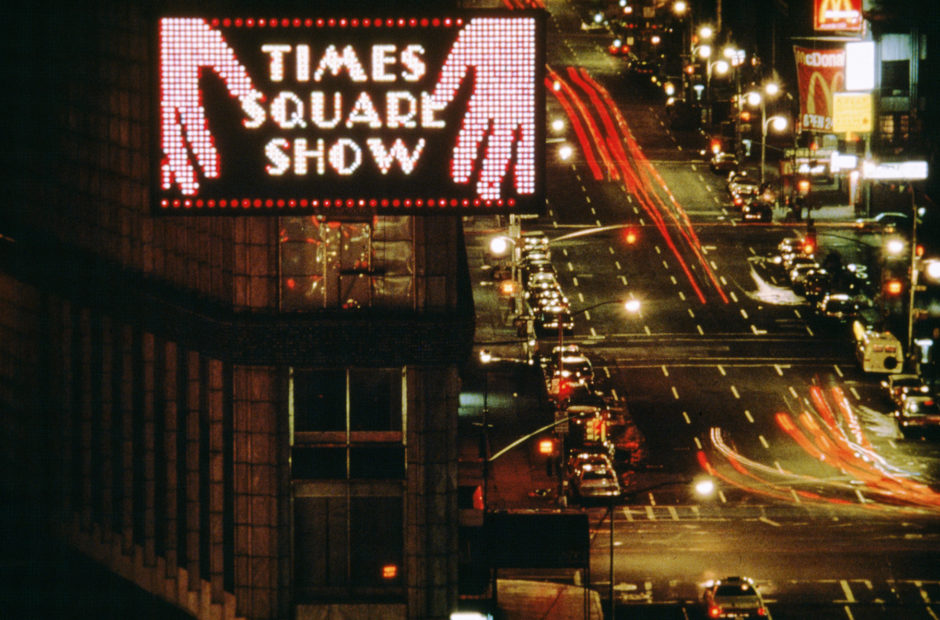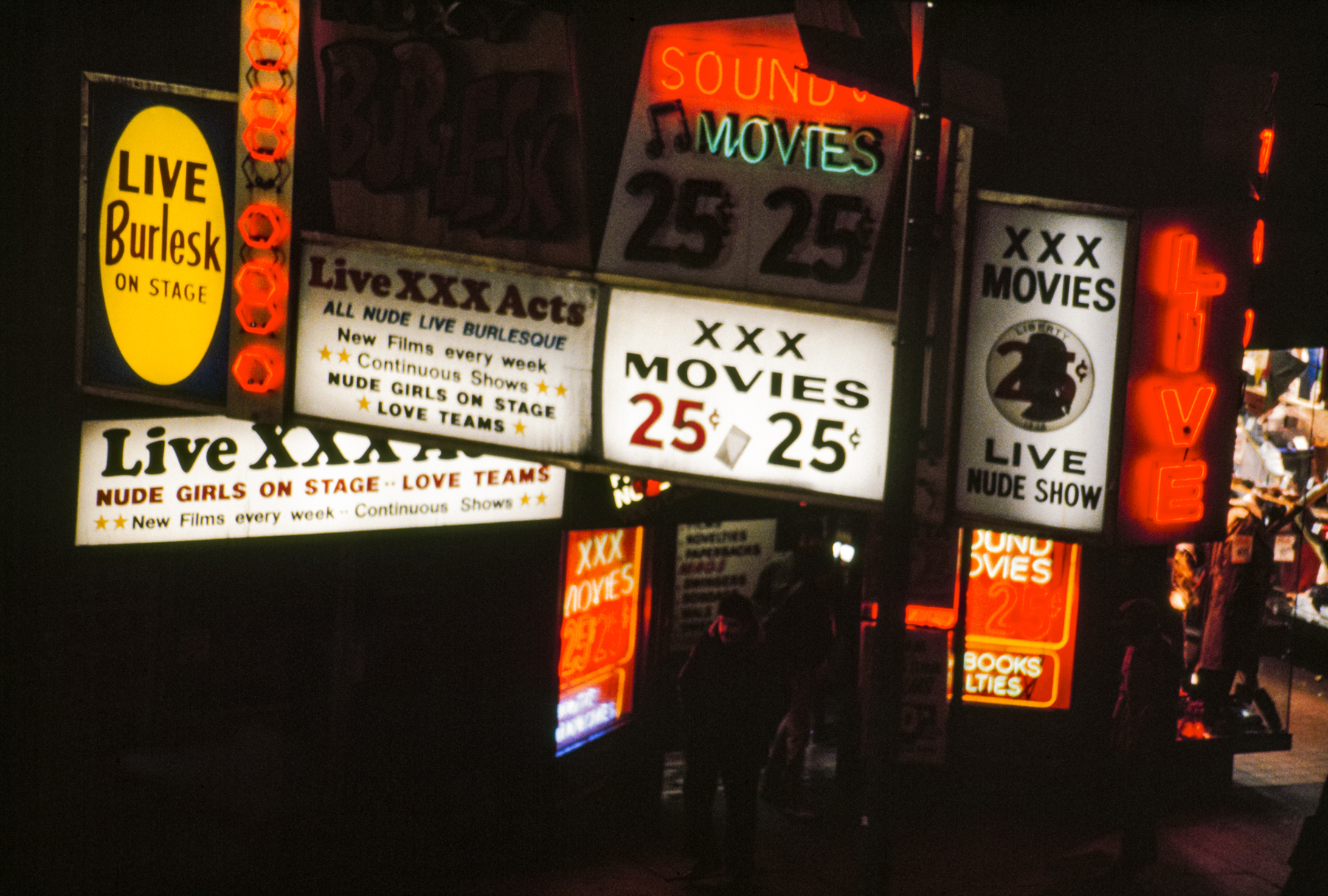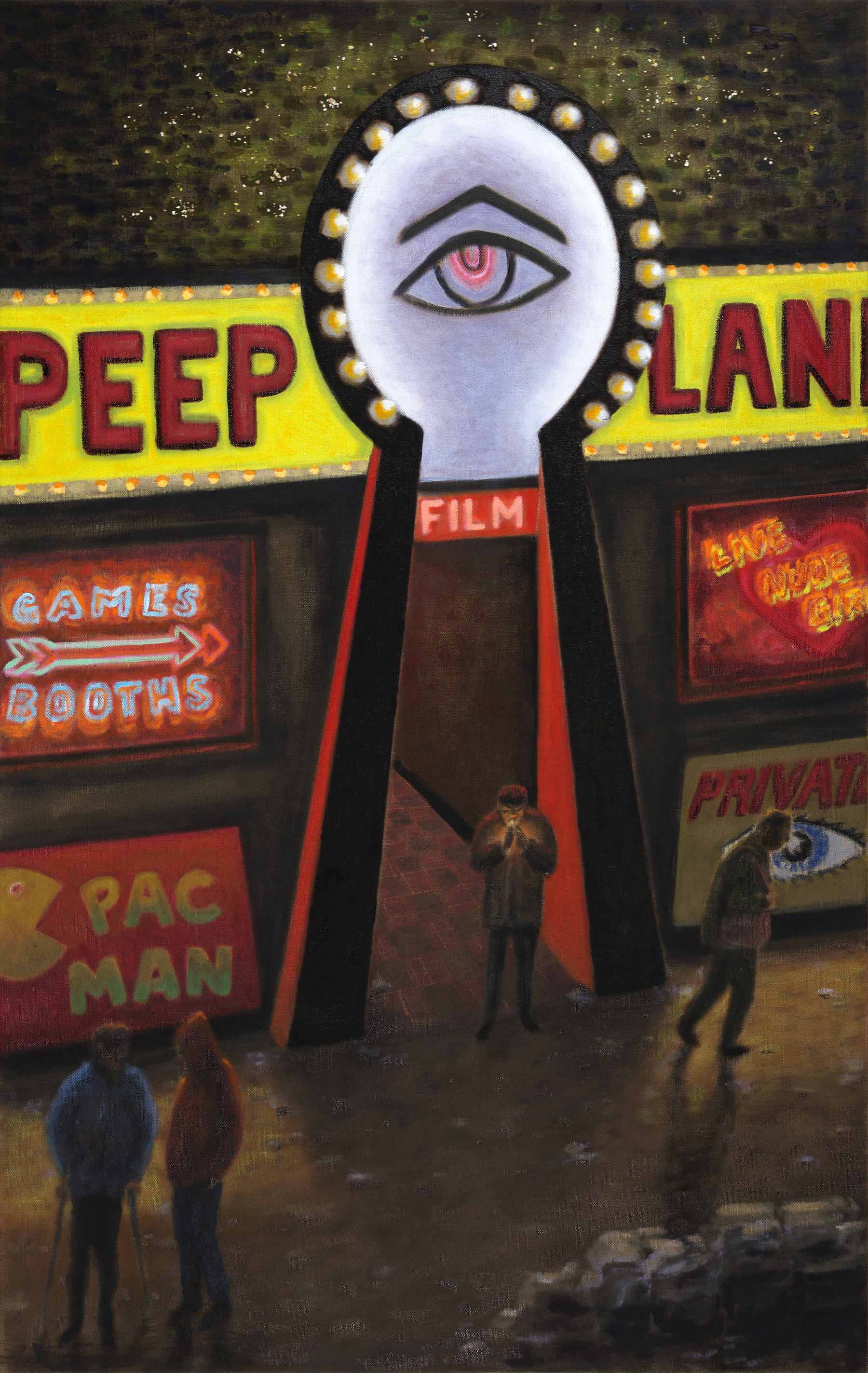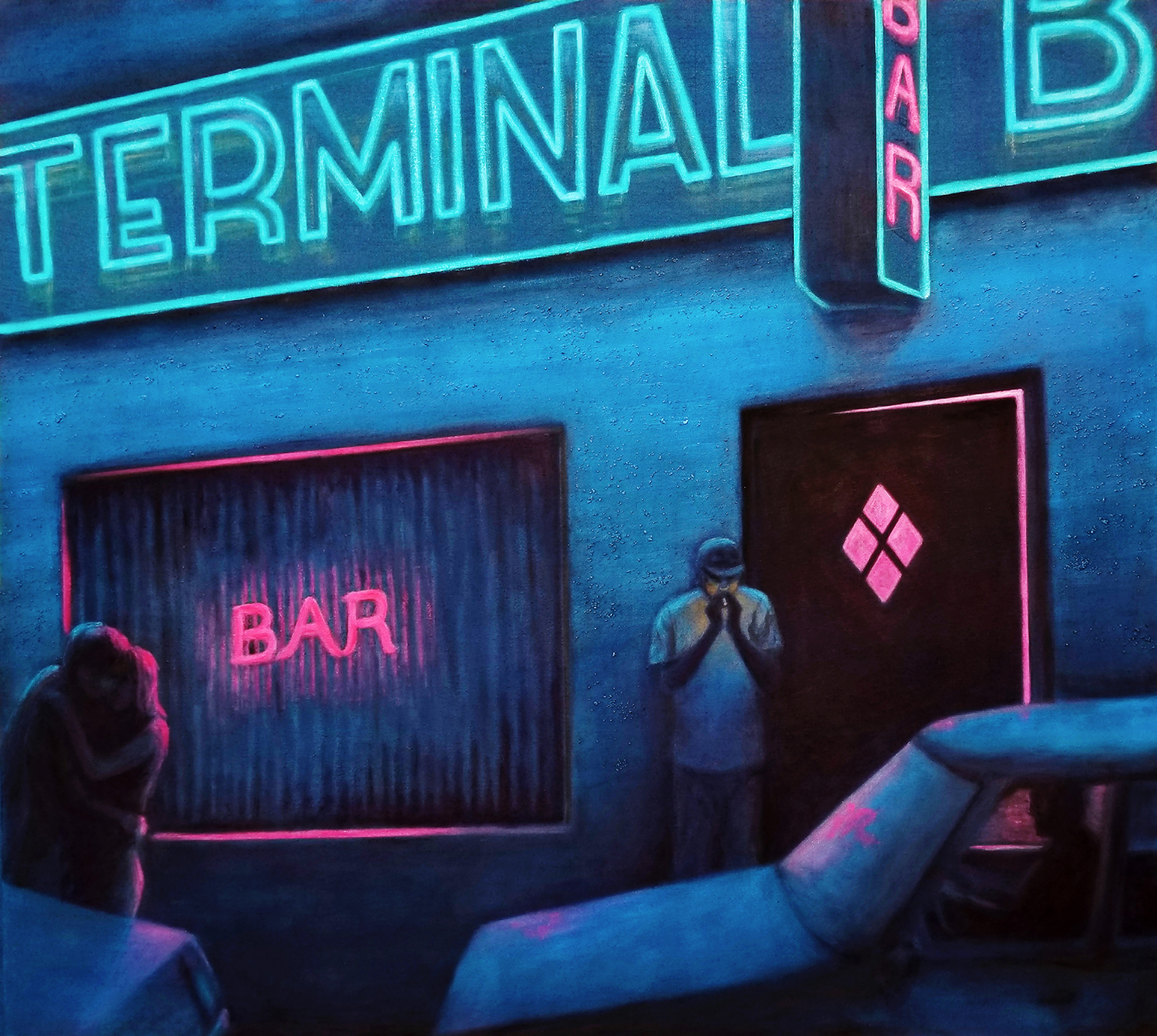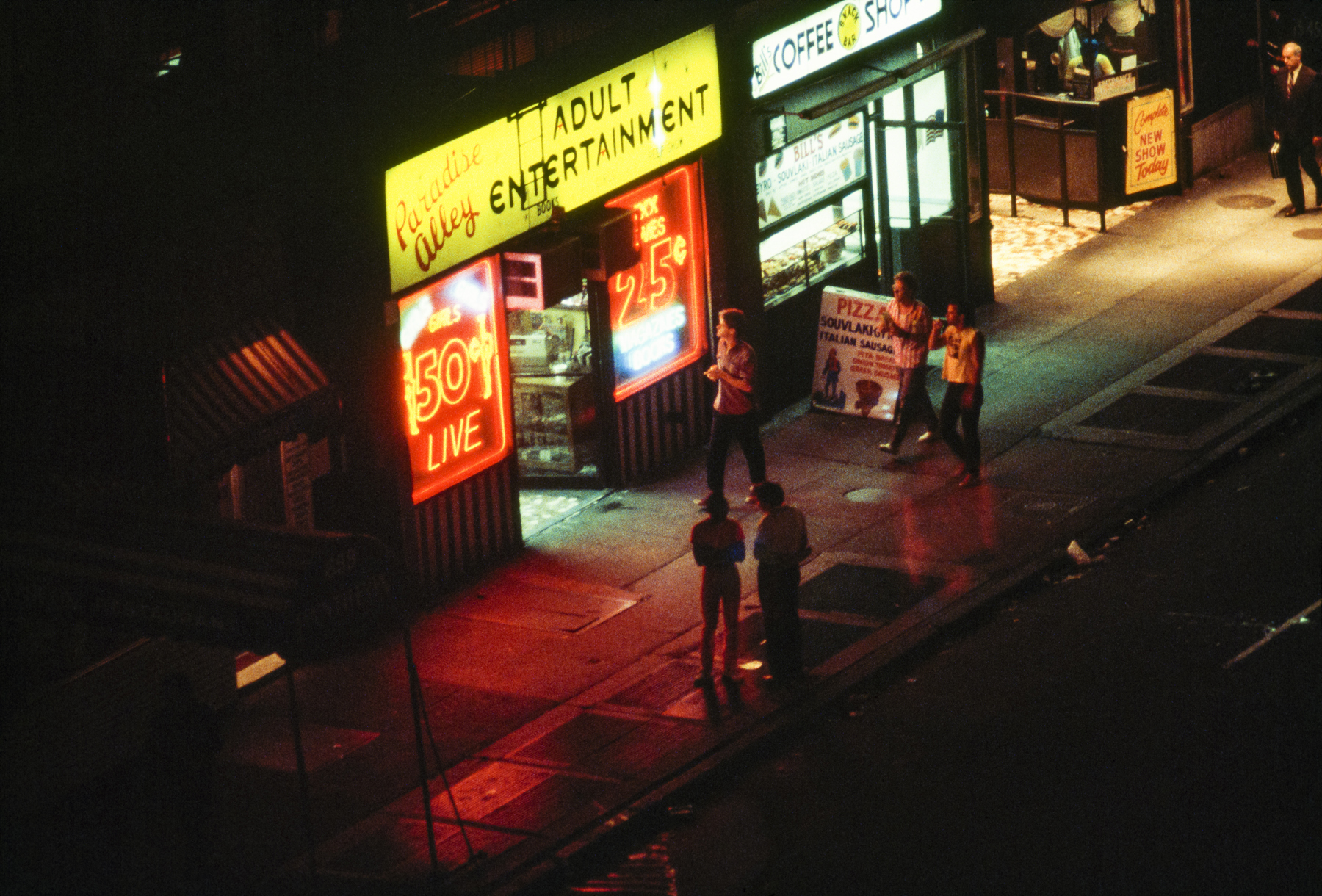JANE DICKSON BRINGS DOWNTOWN NEW YORK ART TO LIFE IN TIMES SQUARE
Artist Jane Dickson is a deep-rooted and central voice in New York City’s complex creative history. In the late 1970s and early ’80s, she was part of the movement joining the legacies of downtown art, punk rock, and hip hop through her involvement with the Colab art collective, the Fashion Moda gallery, and legendary exhibitions including the Real Estate Show and Times Square Show.
In the midst of this groundbreaking work, Dickson lived, worked and raised two children in an apartment on 43rd Street and 8th Avenue at a time when the neighbourhood was at its most infamous, crime-ridden, and spectacularly seedy. Through it all, Jane photographed, drew and painted extraordinary scenes of life in Times Square.
These works include candid documentary snapshots, roughly vibrant charcoal sketches, and paintings created on surfaces ranging from sandpaper to Brillo pads. Featuring a foreword by Chris Kraus, Jane Dickson in Times Square is a time machine back to a New York City that was truly wild: lawless, manic, sometimes squalid, sometimes magnificent.
What attracted you to New York?
That’s where everything was happening!
I wanted to share ideas and work with the artists and activists who were defining our generation and redefining the world by engaging new urban realities.
What are your most vivid memories of the area?
I remember feeling the awesome energy of the vast New Year’s Eve crowd looking up and chanting to my countdown just before midnight, as I ran the billboard under the ball drop.
I remember being randomly shot at on 43 St and I pushed my baby home in her stroller at 6 pm and just hurrying on as if it was no big deal.
I remember the dead-eyed drug dealers working the lobby of my studio building on the Deuce repeating “Coke, Speed, Ballium, Coke, Speed, Ballium” every time I walked in or out, never recognizing me.
I remember the terrified look in the eyes of the Pakistani tailor, who’d been muscled into holding drugs in his 2nd-floor shop below us, for some hulking drug dealers, as he was cuffed and carted off by the cops….
Times Square was wild:
What do you miss the most about the old Times Square?
I miss being young and energized by its glittering, manic, relentless rawness.
What is it that sparked your interest in the underside of contemporary culture?
I grew up in the suburbs, which always felt like a false front, while the dense urban darkness I was supposedly being protected from felt real and necessary to understand. I’ve been exploring corners of American darkness ever since.
Did the TV show The Deuce do a good representation of capturing the spirit of Times Square?
Tin Pan Alley, the real bar that the show calls Hi Hat, was my local bar all through the 1980s. There are a lot of my photos of it in this book. I was friends with Maggie, ( called Abby on TV) who ran the bar. She bought “Up Against the Wall” my painting of young men of colour getting frisked by cops in the subway and it hung at the front of the bar near the jukebox for a decade.
I met Steve, her boyfriend, whose memoir was the basis for the TV show, when he’d come in to pick up money. He never stayed long. Maggie ran Tin Pan as a conscious social experiment in dialogue between extremely diverse and usually very separate groups; the strippers, the Trannies, as they were called then, who’d bring in clothes they’d “boosted” from Macy’s to sell, the animators union, which met there weekly, downtown artists, Euro punks, like the Clash, Australian political activists, and performers like Sweet Honey and the Rock and many others. It was electric. Nan Goldin was bartender, and did early slide shows there, Kiki Smith was the chef and sold hand-printed scarves and tee shirts there. Everyone mingled and sparked projects together.
The first season of The Deuce is set in the early ‘70s before I got to Times Square. It’s a police show about the porn biz, but hopefully, they will get into what was unique and positive about the world Maggie created at Tin Pan Alley this year.
Can you tell me about your creative process and do you have any rules?
Everyone has rules! I want to record my time and place in the world, and how it felt from a woman’s point of view.
Of course! Boy hustlers threw garbage at me when I took photos in Port Authority. A neighbour shot thru our windrows from the Times Square Motor Hotel across the street. Most people in Times Square then were working some hustle so they were afraid of being busted. They did not want any documentation. I bought a tiny all-black Minox camera with autofocus, a rarity at the time, so people often didn’t recognize it as a camera, and learned to shoot from the hip. I wanted to capture the action of the world I was living in, but I tried not to get beat up doing it.
There’s very much a nocturnal feel to your work. Is this when the area really came alive?
Times Square has always been about nightlife and illuminated signs and I came to Times Square to add to that tradition in a job designing animated ads for the first digital billboard in Times Square in 1978. I worked the weekend night shifts so I was there when it was popping every weekend. My billboard was on the second floor, right in the middle of Times Square and my office behind the sign had big windows on the action below. Once I started working there, documenting that world felt urgent. I took my camera everywhere and began taking photos of things to paint. It made me feel brave. I was a nervous, small young woman with a cool job to do in a crazy place. We moved to a loft on 43st near 8th Ave. and lived there for 12 years so I had many days and nights to catch bits of the action around me. I only wish I’d taken more pictures, but the film was expensive…
Can you tell us a little about Colab and how the collective way of working worked?
Collaborative Projects was a cross-disciplinary utopian experiment by a loosely affiliated group of unknown young artists trying to make our own opportunities to be seen and heard by the art world and by a broader public outside the gallery/museum confines. We were interested in reflecting issues in the broader culture, beyond the art world and social change.
Anyone who had the nerve to come to meetings and argue and lobby loudly for their ideas could participate. It was no place for the timid. Colab was launched by a few new media artists to jointly buy video equipment which was then very expensive. This was the dawn of state public arts funding and Colab incorporated and applied every year for arts funding. The concept was no money for administration, all money for the art itself. We received paltry sums each year and argued furiously every time on how best to spend it. Every show had a theme proposed by a member, (anyone who had been to 3 meetings,) open to all, including outsiders. The themes; a weekly cable TV show, an art magazine, exhibitions like the Dog Show, the Drs. And Dentists Show, the Real Estate Show, The Manifesto Show, and finally the Times Square Show pushed everyone to try out each other’s ideas.
Was there an overlap between art and sex work for creatives at the time?
As poor young artists some of my friends worked for a time as strippers or doing phone sex etc. until they found less draining gigs. Actual prostitution and drugs consumed those who got into it and except for David Wojnarowicz and Kathy Acker, no one I knew managed to survive those experiences and make work about it.
What challenges did you face when first setting up your ‘Times Square’ show?
By June 1980, the month of the Times Square show, Colab was a well-oiled machine with some experience and some contacts. Someone persuaded the Durst organization, the biggest real estate firm in the area, to loan us an empty run down 4-floor building awaiting demolition on Broadway at 41st St. I contributed the poster image of 3 card monte and convinced my boss to let me run an animated ad for the show for the whole month on his billboard. I also contributed portraits on garbage bags to the portrait gallery and co-organized the 2-floor stairwell as artists brought in work and hung it wherever they wanted and then another artist would come and move their piece. I tried to referee but it was installed by the pushiest.
It seemed like there was a great community of artists at the time. Could something like this still happen in New York now?
We were the cresting wave of the young baby boomer generation. We’d stopped the Vietnam war and everything seemed possible. America was rich, NYC was cheap, ( no internships then, people got paid to work entry jobs, no crushing student debt, or huge health insurance costs) and the city had an official policy of neglect so we could do anything and no one in charge cared until right-wing politicians began to realize they could use our art to rile their base. There were a lot fewer artists and only the brave came to New York so we mostly knew each other. Without the internet, we had to go out every night just to find out what was happening and to see each other’s shows in clubs. Not much had been professionalized yet so we just tried everything and some of it worked out. It’s a much more restricted organized and competitive world now, but art will keep springing up someplace.
Is NYC still an inspiring place to work as an artist or do you get Any feelings of nostalgia?
I am ecstatic to be working and sharing ideas and opportunities with new artists and thinkers. I staked my claim here 40 years ago and there is way too much here I want to do.
Jane Dickson in Times Square is published by Anthology Editions

